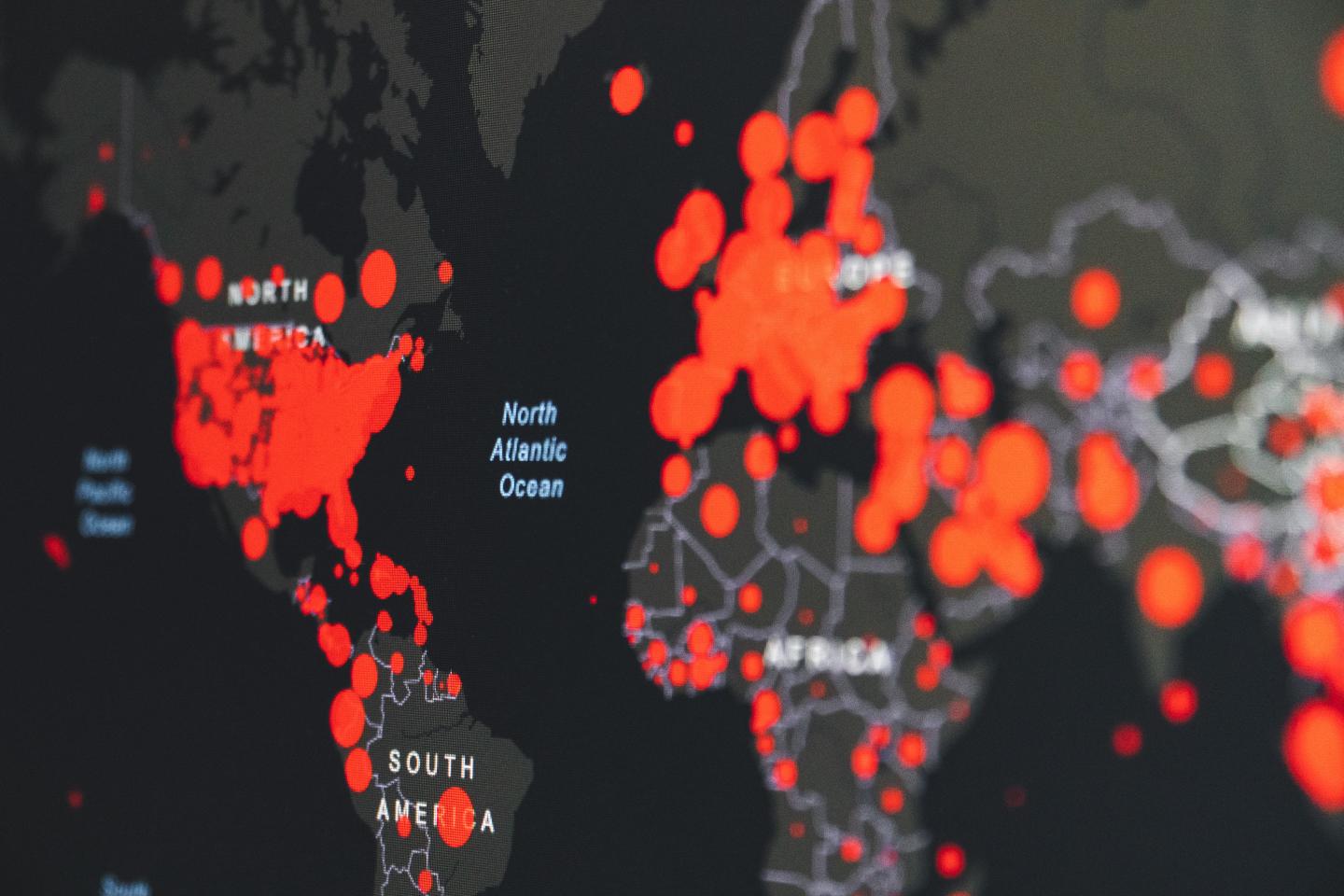Physics expert joins forces with linguists to better model the past

Credit: Image from Martin Sanchez on Unsplash
https://unsplash.com/
Multi-disciplinary researchers at The University of Manchester have helped develop a powerful physics-based tool to map the pace of language development and human innovation over thousands of years – even stretching into pre-history before records were kept.
Tobias Galla, a professor in theoretical physics, and Dr Ricardo Bermúdez-Otero, a specialist in historical linguistics, from The University of Manchester, have come together as part of an international team to share their diverse expertise to develop the new model, revealed in a paper entitled ‘Geospatial distributions reflect temperatures of linguistic feature’ authored by Henri Kauhanen, Deepthi Gopal, Tobias Galla and Ricardo Bermúdez-Otero, and published by the journal Science Advances.
Professor Galla has applied statistical physics – usually used to map atoms or nanoparticles – to help build a mathematically-based model that responds to the evolutionary dynamics of language. Essentially, the forces that drive language change can operate across thousands of years and leave a measurable “geospatial signature”, determining how languages of different types are distributed over the surface of the Earth.
Dr Bermúdez-Otero explained: “In our model each language has a collection of properties or features and some of those features are what we describe as ‘hot’ or ‘cold’.
“So, if a language puts the object before the verb, then it is relatively likely to get stuck with that order for a long period of time – so that’s a ‘cold’ feature. In contrast, markers like the English article ‘the’ come and go a lot faster: they may be here in one historical period, and be gone in the next. In that sense, definite articles are ‘hot’ features.
“The striking thing is that languages with ‘cold’ properties tend to form big clumps, whereas languages with ‘hot’ properties tend to be more scattered geographically.”
This method therefore works like a thermometer, enabling researchers to retrospectively tell whether one linguistic property is more prone to change in historical time than another. This modelling could also provide a similar benchmark for the pace of change in other social behaviours or practices over time and space.
“For example, suppose that you have a map showing the spatial distribution of some variable cultural practice for which you don’t have any historical records – this could be be anything, like different rules on marriage or on the inheritance of possessions,” added Dr Bermúdez-Otero.
“Our method could, in principle, be used to ascertain whether one practice changes in the course of historical time faster than another, ie whether people are more innovative in one area than in another, just by looking at how the present-day variation is distributed in space.”
The source data for the linguistic modelling comes from present-day languages and the team relied on The World Atlas of Language Structures (WALS). This records information of 2,676 contemporary languages.
Professor Galla explained: “We were interested in emergent phenomena, such as how large-scale effects, for example patterns in the distribution of language features arise from relatively simple interactions. This is a common theme in complex systems research.
“I was able to help with my expertise in the mathematical tools we used to analyse the language model and in simulation techniques. I also contributed to setting up the model in the first place, and by asking questions that a linguist would perhaps not ask in the same way.”
###
NOTE:- Henri Kauhanen(1), Deepthi Gopal (2), Tobias Galla(3) (4) and Ricardo Bermúdez-Otero (5);
- Zukunftskolleg, University of Konstanz, Universitätsstraße 10, 78464 Konstanz, Germany.
- Department of Theoretical and Applied Linguistics, University of Cambridge.
- Department of Physics and Astronomy, The University of Manchester
- Instituto de Física Interdisciplinar y Sistemas Complejos (IFISC), CSIC-UIB, Campus Universitat Illes Balears, E-07122 Palma de Mallorca, Spain.
- Department of Linguistics and English Language, The University of Manchester
Media Contact
Ben Robinson
[email protected]
Original Source
https:/
Related Journal Article
http://dx.






